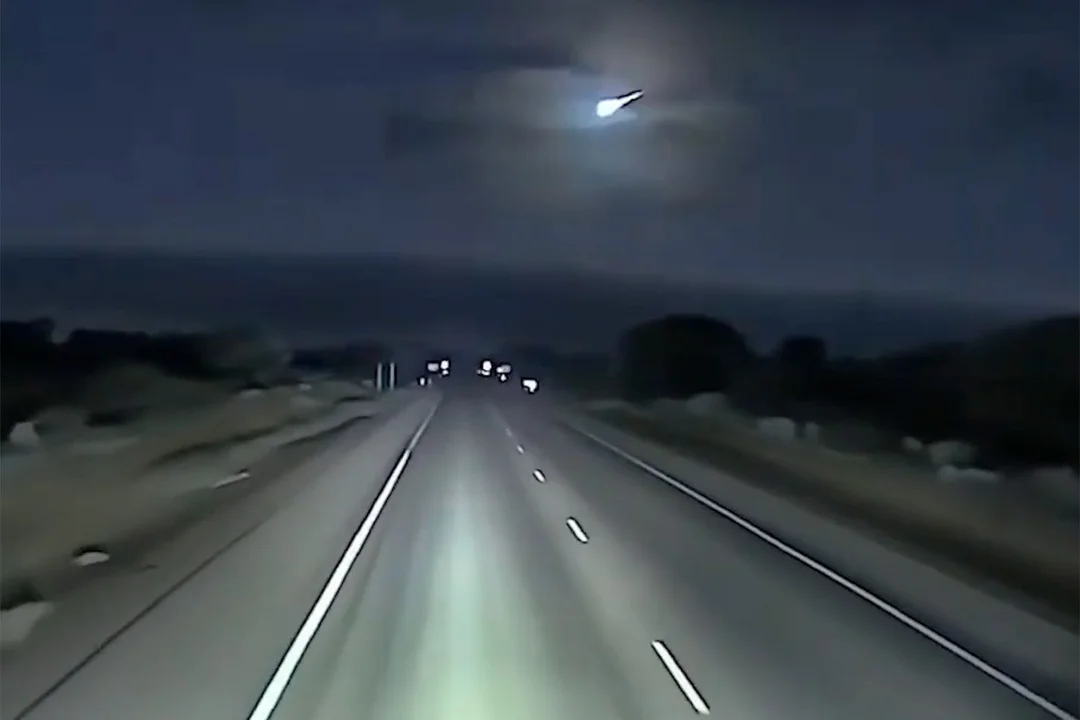
Mother’s Day Meteor Mystery Solved: WA Police Officer Discovers Space Rock Treasure
A dazzling display of light, witnessed across Western Australia on Mother's Day, has led to an exciting discovery. A tennis ball-sized meteorite, dubbed the "Mother's Day Meteorite," has been recovered from a salt lake in the Goldfields region, thanks to the quick thinking and determination of a country police officer. This celestial event, lighting up the skies with vibrant green and orange hues, has captured the imagination of scientists and space enthusiasts alike.
On May 11th, at approximately 6 a.m., the meteorite blazed through the atmosphere, travelling south over the Central Wheatbelt. Witnesses reported seeing a bright green fireball, sparking widespread curiosity and wonder. The team at Curtin University's Desert Fireball Network (DFN) swiftly swung into action, mapping the meteor's trajectory and pinpointing its likely impact zone south of the Breakaways, about 460 kilometers east of Perth.

Ravensthorpe police officer Marcus Scott, an amateur meteorite hunter with several Nullarbor finds under his belt, took the initiative after learning about the possible landing site in his region. After a two-hour drive and a trek through dense bush, Scott located the meteorite on a salt lake. He noted the ease of spotting it due to the recent impact and the contrast against the salt lake surface.
"It's a very easy place to find a meteorite, especially if it's recent," Scott said. He estimated the rock to weigh around 450 grams and be roughly the size of a tennis ball. While not exceptionally beautiful, Scott considers the Mother's Day Meteorite a special find due to its freshness and lack of significant terrestrial weathering.

DFN director Eleanor Sansom and her team also surveyed the area by air, identifying multiple potential impact sites. "We spotted three potential sites and [Mr Scott's rock] was one of them, then there are probably two more," Sansom said, indicating the possibility of recovering more fragments from what’s known as a “strewn field”.
The discovery is significant not only for its novelty but also for the scientific opportunities it presents. Dr. Sansom explained that the meteorite's unusual trajectory, originating from within Earth's orbit, makes it a high-priority specimen for study. Scientists hope to analyze the samples to glean insights into the formation of the solar system, the origins of planets, and even the source of water on Earth.
This Mother's Day Meteorite provides a unique window into the early solar system. According to Dr Sansom, this meteorite is special because its orbit is very similar to Earth’s, coming from closer to the sun. The fragments found could give scientists more information about the solar system.
The recovery of the Mother's Day Meteorite highlights the power of collaboration between citizen scientists and professional researchers. Marcus Scott's local knowledge and determination, combined with the Desert Fireball Network's scientific expertise, resulted in a remarkable achievement.

This discovery has sparked excitement not just in Western Australia, but also among astronomy enthusiasts globally. Will further analysis of this space rock reveal groundbreaking insights into our solar system's history? What are your thoughts on this celestial find? Share your comments and theories below!